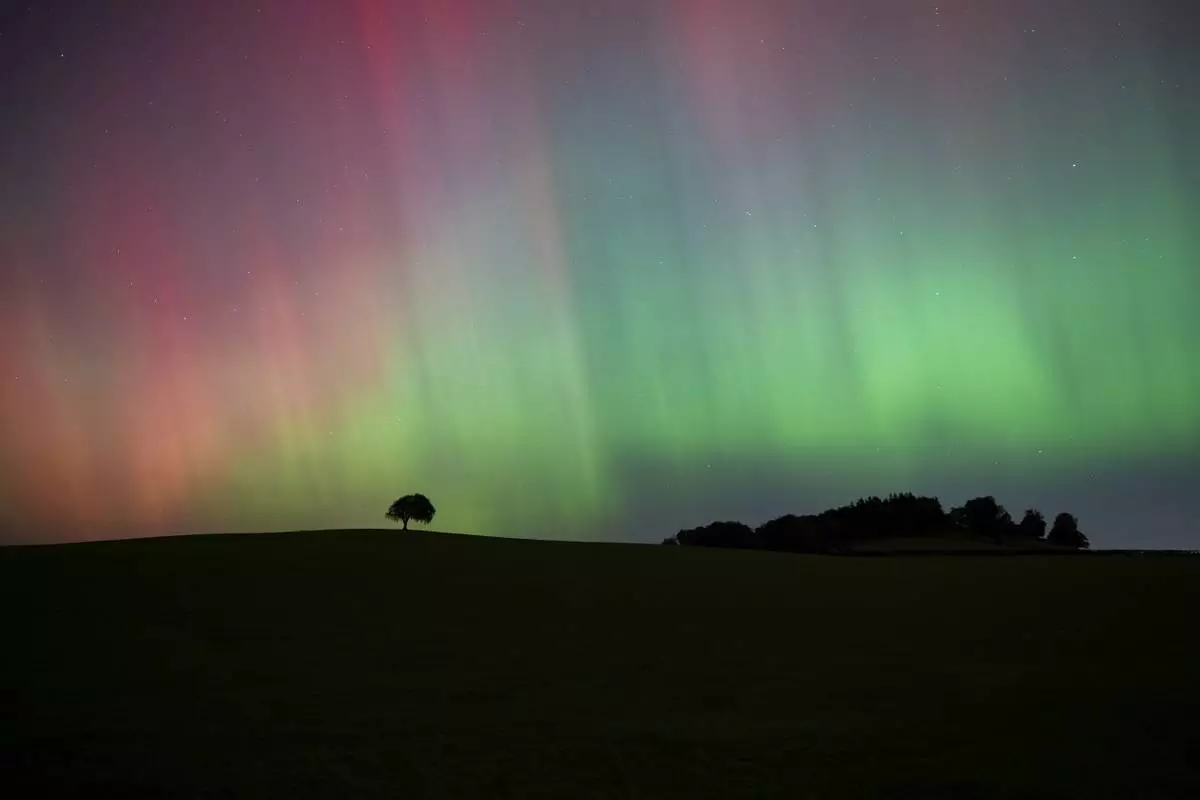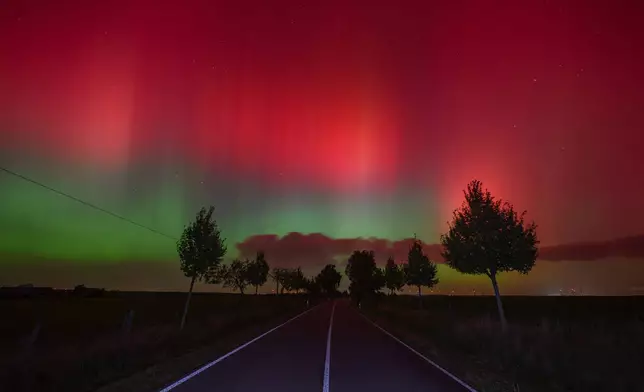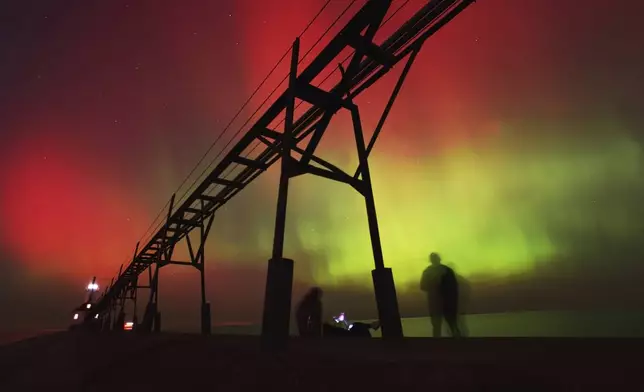Another in a series of unusually strong solar storms hitting Earth produced stunning skies full of pinks, purples, greens and blues farther south than normal, including into parts of Germany, the United Kingdom, New England and New York City.
“It was a pretty extensive display yet again,” said Shawn Dahl, a space weather forecaster at the U.S. National Oceanic and Atmospheric Administration's Space Weather Prediction Center. He said the center has gotten reports of northern lights sightings as far south as New Mexico. “It's been a wonderful year.”
There were no immediate reports of disruptions to power and communications.
NOAA issued a severe geomagnetic storm alert on Wednesday after after an outburst from the sun was detected earlier in the week. Such a storm increases the chance of auroras — also known as northern lights — and can temporarily disrupt power and radio signals.
NOAA's Friday forecast shows continued higher-than-normal activity, but the chances for another overnight show are slim farther south of Canada and the northern Plains states.
The sun sends more than heat and light to Earth — it sends energy and charged particles known as the solar wind. But sometimes that solar wind becomes a storm. The sun's outer atmosphere occasionally “burps” out huge bursts of energy called coronal mass ejections. They produce solar storms, also known as geomagnetic storms, according to NOAA.
The Earth's magnetic field shields us from much of it, but particles can travel down the magnetic field lines along the north and south poles and into Earth’s atmosphere.
When the particles interact with the gases in our atmosphere, they can produce light — blue and purple from nitrogen, green and red from oxygen.
Dahl said this storm generated a particularly vibrant display when it hit because the orientation of the storm’s magnetism lined up well with the Earth’s. “We stayed well connected,” he said.
Solar activity increases and decreases in a cycle that last about 11 years, astronomers say. The sun appears to be near the peak of that cycle, known as a solar maximum.
In May, the sun shot out its biggest flare in almost two decades. That came days after severe solar storms pummeled Earth and triggered auroras in unaccustomed places across the Northern Hemisphere.
There will likely be more to come. Dahl said we remain “in the grip” of the solar maximum and it isn't likely to start to fade until early 2026.
“We’re in for more of the experiences we had last night," he said.
NOAA advises those who hope to see the northern lights to get away from city lights.
The best viewing time is usually within an hour or two before or after midnight, and the agency says the best occasions are around the spring and fall equinoxes due to the way the solar wind interacts with Earth’s magnetic field.
The Associated Press Health and Science Department receives support from the Howard Hughes Medical Institute’s Science and Educational Media Group. The AP is solely responsible for all content.

An aurora borealis, also known as the northern lights, shines over Portsmouth, N.H., Thursday, Oct. 10, 2024. (AP Photo/Caleb Jones)

The northern lights appear over Anchorage, Alaska, early the morning of Friday, Oct.. 11, 2024. (AP Photo/Mark Thiessen)

An aurora borealis, also known as the northern lights, makes an appearance over pumpjacks as they draw out oil and gas from well heads near Cremona, Alberta, Thursday, Oct. 10, 2024. (Jeff McIntosh/The Canadian Press via AP)

The Northern lights glow in the night sky above a road in Lietzen, eastern Germany. (Patrick Pleul/dpa via AP)

People watch as an aurora borealis, also known as the northern lights, lights up the night sky from Montrose Point, Thursday, Oct. 10, 2024, in Chicago. (Tyler Pasciak LaRiviere/Chicago Sun-Times via AP)

An aurora borealis, also known as the northern lights, is seen in the night sky along with the Big Dipper constellation on Thursday, Oct. 10, 2024, in Moscow, Idaho. (AP Photo/Ted S. Warren)

An aurora borealis, also known as the northern lights, glows in the night sky above apartment buildings in the Queens borough of New York, Thursday, Oct. 10, 2024. (AP Photo/Daniel P. Derella)

An aurora borealis, also known as the northern lights, lights up the night sky off Lake Michigan and the St. Joseph Lighthouse, Thursday, Oct. 10, 2024, in St. Joseph, Mich. (Don Campbell/The Herald-Palladium via AP)

The Northern Lights, also known as the Aurora Borealis, are seen in the sky near Knaresborough, England, Friday, Oct. 11, 2024. (Andrew Hawkes via AP)



















